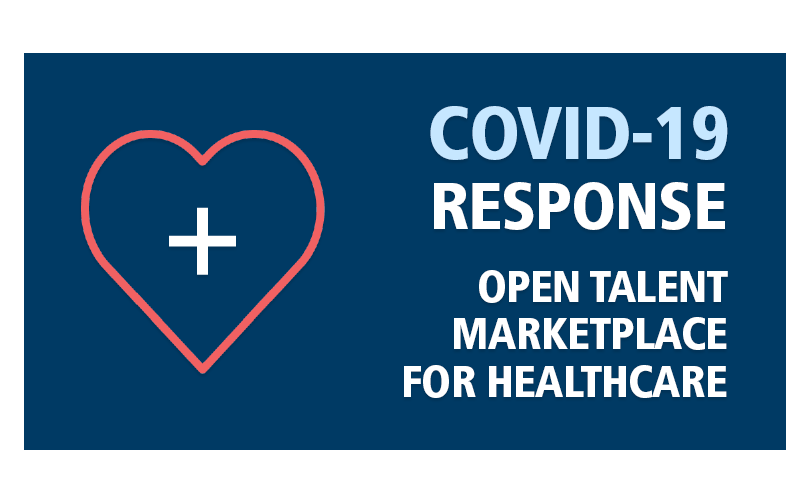
Healthcare Best Practices Beyond COVID-19
COVID-19 has altered healthcare in profound ways, and some best practices learned during the pandemic will endure long after it ends
The COVID-19 pandemic forced the U.S. healthcare system to undertake a multitude of innovations, such as the rapid acceleration of telemedicine and cross-training and flexibility in nurse staffing. Those advances will prove helpful as the industry adapts to a new normal.
“As we move forward into the future, we have more challenges, because COVID is no longer a crisis; it’s a chronic disease,” said Mary Ann Fuchs, DNP, RN, NEA-BC, FAAN, president of the American Organization for Nursing Leadership (AONL) and chief nurse executive and vice president of patient care and system at the Duke University Health System in Raleigh, North Carolina. “How will we continue to change the delivery care models and how do we help our staff build resilience?” she added.
Dealing with clinician burnout
Burnout has long affected physicians and nurses, but stressors associated with the pandemic, such as the volume of critically ill and dying patients, have created new challenges. Ryan Furr-Johnson and Sarah Hostetter, both with the Advisory Board, recommend organizations develop a “comprehensive burnout strategy to support physician recovery.” That plan should be forward-thinking and not reliant on how things were done before the pandemic, but rather by building on new innovations to improve clinician mental health and wellness.
Technology, although often cited as a burnout contributor, could also help address the problem. For instance, artificial intelligence (AI) may enable keyboard-free electronic medical record documentation, as well as integrate information about social determinants of health into the patient’s record. These time-saving steps will reduce clinicians’ stress levels and improve outcomes and workflows.
Healthcare operations
The residual effects of the pandemic will cause ongoing challenges for healthcare operations executives. Revenues, which declined due to the cancellation of elective procedures and other factors, are not expected to bounce all the way back to pre-COVID levels. David Wildebrandt, a member of Berkeley Research Group’s healthcare performance improvement practice, told Health leaders that revenue growth “will be 5% to 8% less when all the dust settles.” He suggested that leaders will shift their focus to fixed costs in order to meet growth targets with less revenue available.
Other potential operational consequences of COVID-19 are:
- Increased provider consolidation
- The need to address cost leakages, including vulnerabilities in revenue cycle, management of outside vendors, and payer compliance
- Continued expansion of telemedicine services
Staffing
Soaring numbers of patients arriving in the emergency department forced hospitals to creatively surge their available beds and nursing staff to care for the influx of people. Many hospitals relied on travel nurses to meet increased patient needs. AMN Healthcare reported record demand in its nurse and allied staffing businesses during the fourth quarter of 2020 amid rising hospitalizations and a shortage of workers.
The need for continued education of nurses to ensure system agility has intensified. The American Association of Critical-Care Nurses created educational programs to help nurses safely float to intensive care settings. The Association also developed a micro-credential.
As COVID-19 persists and as more surgeries and procedures are scheduled, the need for qualified staff continues. Mr. Wildebrandt predicts that staffing challenges will persist and become a “new normal” as hospitals provide care for patients with coronavirus and other conditions.
Implementation of a staffing contingency plan is a key component of a successful talent strategy. A set, the go-to plan will help solve growing demand in times of uncertainty or when permanent staff is overwhelmed.
Financial recovery
The COVID-19 pandemic has adversely affected many hospitals and health systems’ balance sheets, potentially creating financial trouble for years ahead. The pandemic required unexpected and outsized costs related to staffing and purchasing personal protective equipment, to cite just two examples.
In February 2021, the American Hospital Association released an analysis that found hospital and health system revenues could be down as much as $122 billion in 2021, in addition to an estimated loss of at least $323 billion in 2020.
KaufmanHall’s March 21, 2021, National Hospital Flash Report indicates hospital and health system margins are suffering from declining inpatient, emergency department, and outpatient volumes, while at the same time dealing with high pandemic-related costs. Year over year, February 2021 operating margins were down 30.8 percent.
This has led some hospitals and providers to partner with larger, more financially secure organizations with more scale to better manage the financial challenges. Others are trying to increase their liquidity in an attempt to stave off bankruptcy.
The agility to adjust to the changing healthcare environment will serve hospitals and health systems well. Recommendations include prioritizing or delaying certain capital expenses, making a rolling forecast for 2021, using a daily dashboard for volumes and utilization, and reducing waste.
Disaster response
While hospitals, healthcare systems, and businesses have developed and practiced disaster response plans for expected mass casualty events, the COVID-19 pandemic has lasted longer than a hurricane or wildfire. Building relationships with public health officials will remain important and a resource to turn to for assistance in accessing needed resources, such as vaccines and personal protective equipment. Incident command systems enhance rapid communication and understanding.
Supply chain resiliency
The COVID-19 pandemic resulted in disruptions of supply chains and demonstrated how vulnerable hospitals were with just-in-time delivery. Personal protective equipment was hard to obtain and costly. Contributing factors included an over-reliance on offshore production, a shortage of manufacturers, and bottlenecks with trucking and at ports. Panic buying and hoarding led to shortages for organizations that needed those supplies.
Health systems will need to evaluate their strategies to prevent disruptions of delivery of essential products moving forward. That may include building in redundancy, purchasing from U.S. companies, and diversifying suppliers. Technology can help. Artificial intelligence can aid in monitoring supplies, and mapping can provide greater visibility of the supply network. Organizations can work more collaboratively. In addition, greater transparency as to what is in the Strategic National Stockpile will help governments and others with planning.

Technology adoption
Telemedicine has existed for years, but the COVID-19 pandemic gave it a tremendous boost. Both providers and patients enjoy its convenience and time-saving ability. Telemedicine can help boost revenue while keeping in touch with patients.
The Centers of Medicare & Medicaid Services has provided reimbursement, adding to practices and health systems’ revenues at a time when patients remain fearful of in-person care. Third-party reimbursements will play a big factor in how quickly telemedicine continues to expand.
Technology tools have helped hospitals track understaffed shifts and nurse shortages, where staff members were assigned, including those working remotely, and staff who test positive for COVID-19. Susan Salka, CEO of AMN, said that the company “created and acquired new technology-enabled solutions that supported our clients' ability to provide services in different settings, including virtual environments and temporary facilities. We greatly improved our ability to direct our resources where they are needed most.”
Electronic health record vendors have prepared their systems to track COVID-19 vaccine administration for now and into the future. The systems remind patients to return for a second dose. This automated feature will prove helpful if patients require annual COVID-19 vaccinations or boosters for new variants.
The use of artificial intelligence (AI) is gaining in popularity and increasing productivity. HealthcareITNews reported that Regional Cancer Care Associates in New Jersey uses AI to identify patients considered at high risk for COVID-19, so that team members could reach out to them. Organizations also have employed AI to create a contact-free check-in process, and to assist physicians and other providers diagnose COVID-19 by using magnetic resonance imaging.
The future of healthcare delivery
The COVID-19 pandemic has spurred changes in healthcare organizations. Technology has helped, but ultimately, healthcare is a people-centric industry. Across the board, people have risen to the challenges and adapted to a new environment.
As challenging as dealing with the COVID-19 pandemic surge has been, 86 percent of respondents to the Joslin/AONL survey said they now feel better prepared for the future. “Organizations changed how they deliver care, how they interact with teams and patients,” said Ms. Fuchs. “These are things we can continue to build upon.”
For more insights on how to “Plan and Persevere” for the future, please visit our website
To learn more about AMN Healthcare and how we can help your organization plan for the future of healthcare, contact us at client.services@amnhealthcare.com or give us a call at 800-887-1456.
Download our infographic on four key strategies to manage future disruptions.



